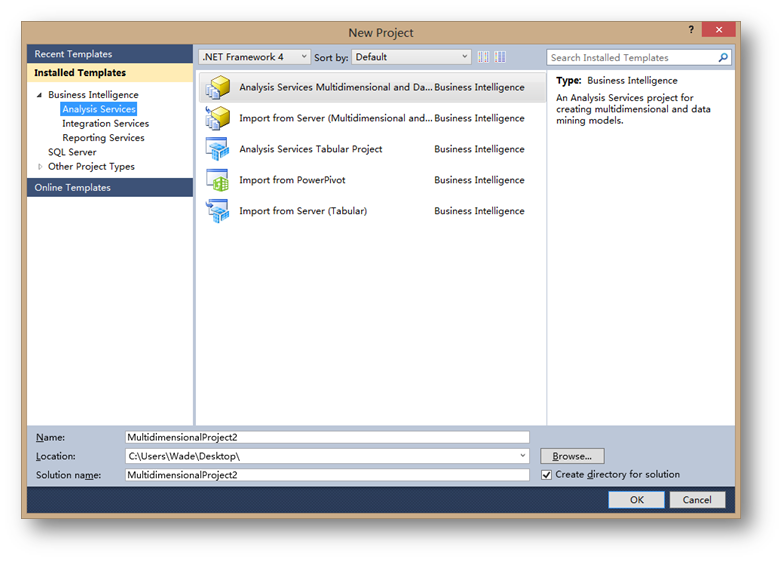# (一)什么是netty {#一-什么是netty}
Netty是一个异步的,基于事件驱动的网络应用框架 ,用于快速开发可维护、高性能的网络服务器和客户端 。Netty的应用十分广泛,可以说主流的框架中,如果有网络方面的需求,一般用的都是netty框架。比如Dubbo 、ES 、Zookeeper中都用到了Netty。因此即使在平常工作中没有Netty的使用场景,Netty还是十分值得我们去学习的。
Netty底层基于NIO开发,其实大部分的Java程序员对于网络方面的开发能力是比较弱的,因此如果有网络相关的开发业务,如果自己通过BIO或者NIO实现,会产生很多问题。而通过Netty可以快速开发网络应用,因此也有人把Netty称为网络开发框架中的Spring。
关于NIO和BIO的区别,我之前在博客中也讲到过,BIO每次通信都要新建一个线程去处理,NIO通过多路复用的方式去处理请求。下图就是NIO的处理流程。

# (二)第一个netty入门程序 {#二-第一个netty入门程序}
既然基于NIO开发,netty的入门程序和我们当时写的nio入门程序比较像,首先开发一个服务器端,netty的开发流程可以遵循一套规范:
1、通过ServerBootstrap启动,组装netty组件
2、组装eventLoopGroup
3、组装Channel
4、通过handler处理连接、读写请求
public class FirstServer {
public static void main(String[] args) {
// 1、服务器端的启动器,组装netty组件
new ServerBootstrap()
//2、组装eventLoop组
.group(new NioEventLoopGroup())
//3、选择服务器的ServerSocketChannel实现
.channel(NioServerSocketChannel.class)
//4、负责处理连接和读写
.childHandler(new ChannelInitializer<NioSocketChannel>() {
@Override
protected void initChannel(NioSocketChannel nioSocketChannel) throws Exception {
//将bytebuffer转换为字符串
nioSocketChannel.pipeline().addLast(new StringDecoder());
//自定义handler,这里接收读事件后展示数据
nioSocketChannel.pipeline().addLast(new ChannelInboundHandlerAdapter(){
@Override
public void channelRead(ChannelHandlerContext ctx, Object msg) throws Exception {
System.out.println(msg);
}
});
}
})
//5、监听端口
.bind(8080);
}}
接着开发一个客户端,客户端的整体流程和服务器端十分类似:
1、通过Bootstrap启动,组装netty组件
2、组装eventLoopGroup
3、组装Channel
4、添加handler处理器
5、建立连接
6、发送数据到服务端
public class FirstClient {
public static void main(String[] args) throws InterruptedException {
//1、启动类
new Bootstrap()
//2、添加EventLoop组
.group(new NioEventLoopGroup())
//3、添加channel
.channel(NioSocketChannel.class)
//4、添加处理器
.handler(new ChannelInitializer<NioSocketChannel>() {
@Override
protected void initChannel(NioSocketChannel nioSocketChannel) throws Exception {
//将发送的内容encode编码
nioSocketChannel.pipeline().addLast(new StringEncoder());
}
})
//5、连接到服务器
.connect(new InetSocketAddress("localhost",8080))
.sync()
.channel()
//6、发送数据
.writeAndFlush("hello");
}}
启动服务器端后再启动客户端,可以发现服务端接受到了客户端发过来的信息。看到这里觉得还是有点蒙没关系,下面会对每个组件进行讲解。
# (三)理解Netty中的组件 {#三-理解netty中的组件}
# 3.1 EventLoop {#_3-1-eventloop}
EventLoop其实是一个单线程的执行器,同时维护了一个Selector,EventLoop的作用是处理Channel上的io事件。
# 3.2 EventLoopGroup {#_3-2-eventloopgroup}
EventLoopGroup是一组EventLoop,Channel通常会调用EventLoopGroup中的register方法绑定其中的一个EventLoop,后续这个channel中的io事件则都由这个EventLoop处理。
# 3.3 channel {#_3-3-channel}
channel是一个数据的传输流,channel可以理解为是通讯的载体。
# 3.4 ChannelHandler {#_3-4-channelhandler}
ChannelHandler是用来处理Channel上的各种事件的,所有的ChannelHandler连起来就是pipeline。简单来讲,channel是数据的传输通道,而ChannelHandler用来处理通道中的数据。
# 3.5 ByteBuf {#_3-5-bytebuf}
ByteBuf是netty中数据的传输载体,网络数据的基本单位总是字节,ByteBuf用来传输这些网络上的字节。
# (四)EventLoop {#四-eventloop}
EventLoop可以处理多种任务,单独使用EventLoop可以通过下面几个步骤实现:
1、创建一个EventLoopGroup
2、从EventLoopGroup中获取EventLoop
3、通过EventLoop执行任务
通过代码这样表示:
public class TestEventLoop {
public static void main(String[] args) {
//1、创建事件循环组
//NioEventLoopGroup可以处理IO事件、普通任务、定时任务
EventLoopGroup group=new NioEventLoopGroup();
//2、获取下一个事件循环对象
EventLoop eventLoop = group.next();
//3、执行普通任务
eventLoop.execute(()->{
System.out.println("普通任务");
});
//4、执行定时任务
eventLoop.scheduleAtFixedRate(()->{
System.out.println("定时任务");
},0,1, TimeUnit.SECONDS);
}}
EventLoop最常用的就是执行IO任务了,我们在入门程序中写的group(new NioEventLoopGroup())就是把EventLoop用来处理IO任务。
在netty中,我们还会在绑定group时指定boss 和work,boss用来处理连接,work用来处理收到读写请求后续的操作,有的时候我们还可以自定义EventLoopGroup处理其他任务,因此前面的FirstServer 可以写成下面这样:
public class NioServer {
public static void main(String[] args) {
//boss用来处理连接
NioEventLoopGroup bossGroup = new NioEventLoopGroup();
//work用来处理读写请求
NioEventLoopGroup workGroup = new NioEventLoopGroup();
//otherGroup处理普通任务,比如打印一段内容
EventLoopGroup otherGroup=new DefaultEventLoop();
new ServerBootstrap()
.group(bossGroup,workGroup)
.channel(NioServerSocketChannel.class)
.childHandler(new ChannelInitializer<NioSocketChannel>() {
@Override
protected void initChannel(NioSocketChannel nioSocketChannel) throws Exception {
nioSocketChannel.pipeline().addLast(new ChannelInboundHandlerAdapter(){
@Override
public void channelRead(ChannelHandlerContext ctx, Object msg) throws Exception {
ByteBuf byteBuf = (ByteBuf) msg;
System.out.println(byteBuf.toString());
ctx.fireChannelRead(msg); //将msg传给下一个处理者
}
})
.addLast(otherGroup,"handler",new ChannelInboundHandlerAdapter(){
@Override
public void channelRead(ChannelHandlerContext ctx, Object msg) throws Exception {
ByteBuf byteBuf = (ByteBuf) msg;
System.out.println(byteBuf.toString());
}
});
}
}).bind(8080);
}}
# (五)Channel {#五-channel}
Channel中有几个常用的方法:
close() 关闭channelpipeline() 添加处理器write() 将数据写入到缓冲区flush() 将数据刷出,也就是发给服务端writeAndFlush() 将数据写入并刷出
我们通过入门案例的客户端代码讲解Channel
# 5.1 channel的连接 {#_5-1-channel的连接}
public class NioClient {
public static void main(String[] args) throws InterruptedException {
ChannelFuture channelFuture = new Bootstrap()
.group(new NioEventLoopGroup())
.channel(NioSocketChannel.class)
.handler(new ChannelInitializer<NioSocketChannel>() {
@Override
protected void initChannel(NioSocketChannel nioSocketChannel) throws Exception {
nioSocketChannel.pipeline().addLast(new StringEncoder());
}
})
//connect是一个异步调用的过程,因此必须要使用sync方法等待连接建立
.connect(new InetSocketAddress("localhost", 8080));
//1、使用sync方法阻塞线程直到连接建立
channelFuture.sync();
channelFuture.channel().writeAndFlush("hello,world");
}}
整个流程这里就不介绍了,主要介绍里面的一个方法 channelFuture.sync(); 当调用connect方法建立连接时,这个connect方法其实是一个异步的方法,因此如果不加 channelFuture.sync()方法等待连接建立,是无法获取到连接后的channel的,更别提写入数据了。
除了使用sync等待连接,还可以采用设置监听器的方式获取channelFuture
public static void main(String[] args) throws InterruptedException {
ChannelFuture channelFuture = new Bootstrap()
.group(new NioEventLoopGroup())
.channel(NioSocketChannel.class)
.handler(new ChannelInitializer<NioSocketChannel>() {
@Override
protected void initChannel(NioSocketChannel nioSocketChannel) throws Exception {
nioSocketChannel.pipeline().addLast(new StringEncoder());
}
})
//connect是一个异步调用的过程,因此必须要使用sync方法等待连接建立
.connect(new InetSocketAddress("localhost", 8080));
//2、使用addListener方法异步处理结果
channelFuture.addListener(new ChannelFutureListener() {
//在nio连接建立完毕之后,调用operationComplete方法
@Override
public void operationComplete(ChannelFuture channelFuture) throws Exception {
Channel channel = channelFuture.channel();
channel.writeAndFlush("hello,world");
}
});}
思路是一样的,等连接建立之后再处理对应的方法。
# 5.2 channel的关闭 {#_5-2-channel的关闭}
除了连接是异步方法之外,channel的关闭方法也是异步的,因此也需要通过
同步阻塞的方式等待关闭:Channel channel = channelFuture.channel();ChannelFuture closeFuture = channel.closeFuture();System.out.println("等待关闭中");//当其他线程关闭了channel,sync同步等待closeFuture.sync();System.out.println("连接已关闭");
同样也可以采用监听器回调的方式:
Channel channel = channelFuture.channel();ChannelFuture closeFuture = channel.closeFuture();closeFuture.addListener(new ChannelFutureListener() {
@Override
public void operationComplete(ChannelFuture channelFuture) throws Exception {
System.out.println("连接已关闭");
}});
# (六)ChannelHandler {#六-channelhandler}
ChannelHandler是用来处理Channel上的各种事件的,handler分为inbound 和outbount 两种,所有的ChannelHandler连起来就是pipeline。
ChannelInboundHandlerAdapter的子类主要用来读取客户端数据,写回结果。
ChannelOutboundHandlerAdapter的字类主要对写回结果进行加工。
关于handler和pipeline的代码在前面的例子中都有写
public static void main(String[] args) {
new ServerBootstrap()
.group(new NioEventLoopGroup())
.channel(NioServerSocketChannel.class)
.childHandler(new ChannelInitializer<NioSocketChannel>() {
@Override
protected void initChannel(NioSocketChannel nioSocketChannel) throws Exception {
//1、从channel中获取到pipeline
ChannelPipeline pipeline = nioSocketChannel.pipeline();
//2、添加handler处理器到pipeline
pipeline.addLast(new ChannelInboundHandlerAdapter(){
@Override
public void channelRead(ChannelHandlerContext ctx, Object msg) throws Exception {
ByteBuf byteBuf = (ByteBuf) msg;
System.out.println(byteBuf.toString());
ctx.fireChannelRead(msg); //将msg传给下一个处理者
}
});
//3、添加多个表示依次执行
pipeline.addLast(new ChannelInboundHandlerAdapter(){
@Override
public void channelRead(ChannelHandlerContext ctx, Object msg) throws Exception {
ByteBuf byteBuf = (ByteBuf) msg;
System.out.println(byteBuf.toString());
}
});
}
}).bind(8080);
# (七)ByteBuf {#七-bytebuf}
netty中的ByteBuf比JDK自带的ByteBuffer对字节数据的操作更加友好,也更加强大。ByteBuf的主要优势有几下几点:
1、支持自动扩容
2、支持池化技术,可以重用实例,节约内存
3、读写指针分离
4、很多方法体现了零拷贝,比如slice、duplicate等
接下来通过一些操作带你来了解ByteBuf。
# 1、自动扩容 {#_1、自动扩容}
创建一个默认的ByteBuf,初始容量是256,写入一系列数据之后,这个容量会随着数据的增大自动扩容。
public static void main(String[] args) {
ByteBuf buf= ByteBufAllocator.DEFAULT.buffer();
System.out.println(buf);
StringBuilder stringBuilder=new StringBuilder();
for (int i = 0; i < 500; i++) {
stringBuilder.append("1");
}
buf.writeBytes(stringBuilder.toString().getBytes());
System.out.println(buf);}
结果:
PooledUnsafeDirectByteBuf(ridx: 0, widx: 0, cap: 256)PooledUnsafeDirectByteBuf(ridx: 0, widx: 500, cap: 512)
ByteBuf的扩容规则如下:
如果数据大小没有超过512,每次扩容到16的整数倍
如果数据大小超过512,则扩容到下一个2^n次
扩容不能超过max capacity
# 2、直接内存和堆内存 {#_2、直接内存和堆内存}
ByteBuf支持创建基于直接内存的ByteBuf,也支持创建基于堆内存的ByteBuf。两者的差距在于:
堆内存的分配效率较高,但是读写性能相对比较低。
直接内存的分配效率比较低,但是读写性能较高(少一次内存复制)
netty默认使用直接内存作为创建ByteBuf的方式
ByteBufAllocator.DEFAULT.heapBuffer();ByteBufAllocator.DEFAULT.directBuffer();
# 3、池化技术 {#_3、池化技术}
ByteBuf支持池化技术,所谓池化指的是ByteBuf创建出来后可以重用,节约内存。通过JVM参数开启或关闭netty的池化,默认开启状态:
-Dio.netty.allocator.type={unpooled|pooled}
# (八)总结 {#八-总结}
Netty是个很强大的框架,但是网络开发本就是一件比较复杂的事情,接下来我会用Netty做一些简单的应用出来,通过这些应用会让Netty更加容易理解一些。
 51工具盒子
51工具盒子




